Exploring the Legacy and Beauty of MacDougall Tartan Design
by Aimee Li on Jul 27, 2024
Table of Content
I. Introduction
Few tartan patterns evoke as much intrigue and history as the MacDougall Tartan. This stunning pattern not only represents the MacDougall clan of Scotland but also encapsulates centuries of tradition, identity, and artistry. In this article, we will explore the origins and significance of the MacDougall Tartan and discover why it continues to capture the hearts of many.
A. An Overview of Clan MacDougall
Clan MacDougall, one of Scotland's most distinguished clans, boasts a history steeped in valor, tradition, and cultural heritage. Originating in the 12th century, the clan's stronghold was Dunollie Castle, a symbol of their power and influence in the region of Argyll. The MacDougalls played a significant role in the Wars of Scottish Independence, initially aligning with Clan Comyn against Robert the Bruce. Despite facing hardships and conflicts, the clan demonstrated remarkable resilience and adaptability.
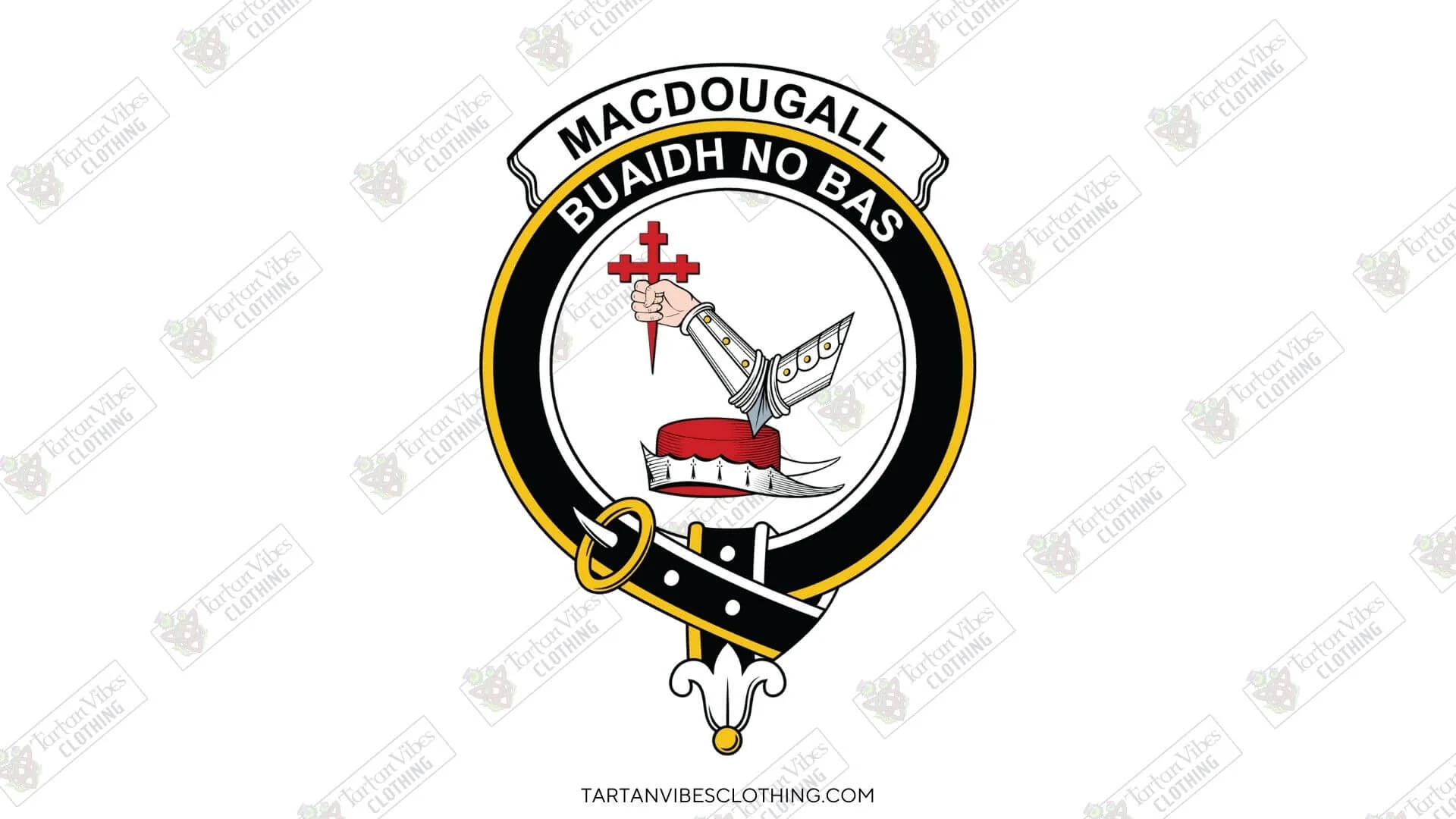
Today, Clan MacDougall continues to celebrate its rich legacy through gatherings, cultural events, and the preservation of their iconic tartan and symbols.
B. Brief History of Clan MacDougall
Gaelic descriptions of Viking invaders used coloring: "Finn Ghall" for fair strangers and "Dubh Ghall" for dark strangers. "Dubh Ghall" was the name given to King Somerled's eldest son. After Somerled died in 1164, his son Dougall became King of Dalriada. By 1244, the MacDougall name had established itself as a clan. Dougall's descendants built notable castles like Dunstaffnage, Dunollie, Duntrune, Aros, Coeffin, Dunchonnel, and Cairnburgh, as well as Ardchattan Priory, the MacDougall chiefs' burial ground until 1737. Ewan endorsed most of these constructions.

Ewan managed his island possessions independently of the Norwegian King and tried to keep his mainland properties from the Scottish King. When King Haakon of Norway planned an invasion in 1263, Ewan surrendered his islands but later attacked part of the Norse fleet. After Haakon's defeat in the Battle of Largs, Norway returned the Hebrides to Scotland three years later.
Alistair MacDougall married the sister of John Comyn, whose son, the Red Comyn, was a contender for the Scottish throne. However, Bruce's ambition led him to kill the Red Comyn, igniting a feud that destroyed the Comyns and resulted in the MacDougalls losing their islands to Bruce.
💡 Learn more about Clan MacDougall's history at Explore Clan MacDougall History: Legends and Ancestral Tales
II. What is the Clan MacDougall Tartan?
The MacDougall Tartan is a reproduction of the initial tartan adopted by the Chiefs of the Clan MacDougall 200 years ago. The original version was uncovered in 2010, and it was used as curtains in Dunollie House, the Clan Seat located a mile from Oban in the West Highlands. Although it had faded significantly after 200 years of exposure, the fabric remained sturdy and remarkably shaped, with the original colors still preserved deep within the curtain's folds.

Historians have been able to trace the tartan's history by examining the intricate details of the weaving technique and the fabric's construction. For the first time in 200 years, Lochcarron Weavers in the Scottish Borders have crafted a replica of this tartan.
III. The Origin of Clan MacDougall Tartan
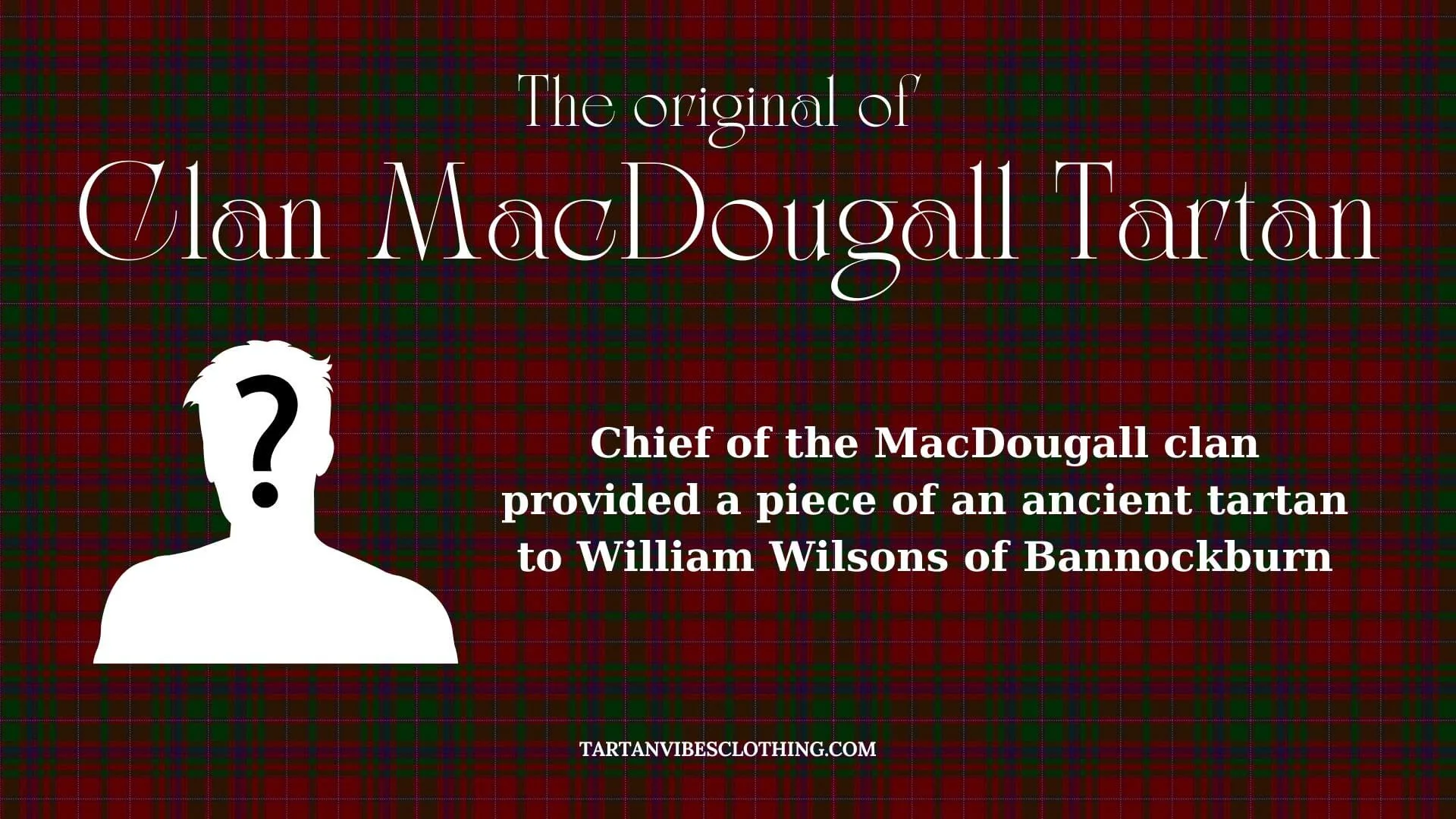
The MacDougalls were pivotal in the early adoption of clan tartans after the repeal of the Act of Proscription in 1782. This law had earlier prohibited wearing traditional Highland clothing, including tartans, as part of an initiative to diminish Highland culture and impose English dominance.
Following the repeal, the MacDougall clan eagerly took advantage of the chance to reconnect with their roots and showcase their identity through a unique tartan design. It is reported that the Chief of the MacDougall clan at the time (Alexander, the 23rd Clan Chief) provided a piece of what was thought to be an ancient tartan to the famous weavers, William Wilsons of Bannockburn. This piece was the inspiration and reference for creating the first MacDougall tartan.

With the historical piece, William Wilsons of Bannockburn endeavored to duplicate and weave the MacDougall tartan carefully. The complex design, colors, and patterns were meticulously recreated to pay homage to the clan's heritage. Ultimately, in 1790, the initial length of MacDougall tartan was finished, marking a pivotal moment in the clan's history. Since then, the MacDougall tartan has represented the clan's identity and is a testament to their rich Scottish heritage. It is a visual symbol of the MacDougalls' historical ties to their ancestral lands and their role in Scottish history.
The MacDougall clan's prompt adoption of their tartan demonstrates their commitment to preserving and celebrating their distinctive cultural practices. By reviving their unique tartan, the MacDougalls showed their determination and dedication to maintaining their Scottish heritage despite past restrictions and adversities.
IV. The Colors, Patterns, and Meaning of Clan MacDougall Tartan
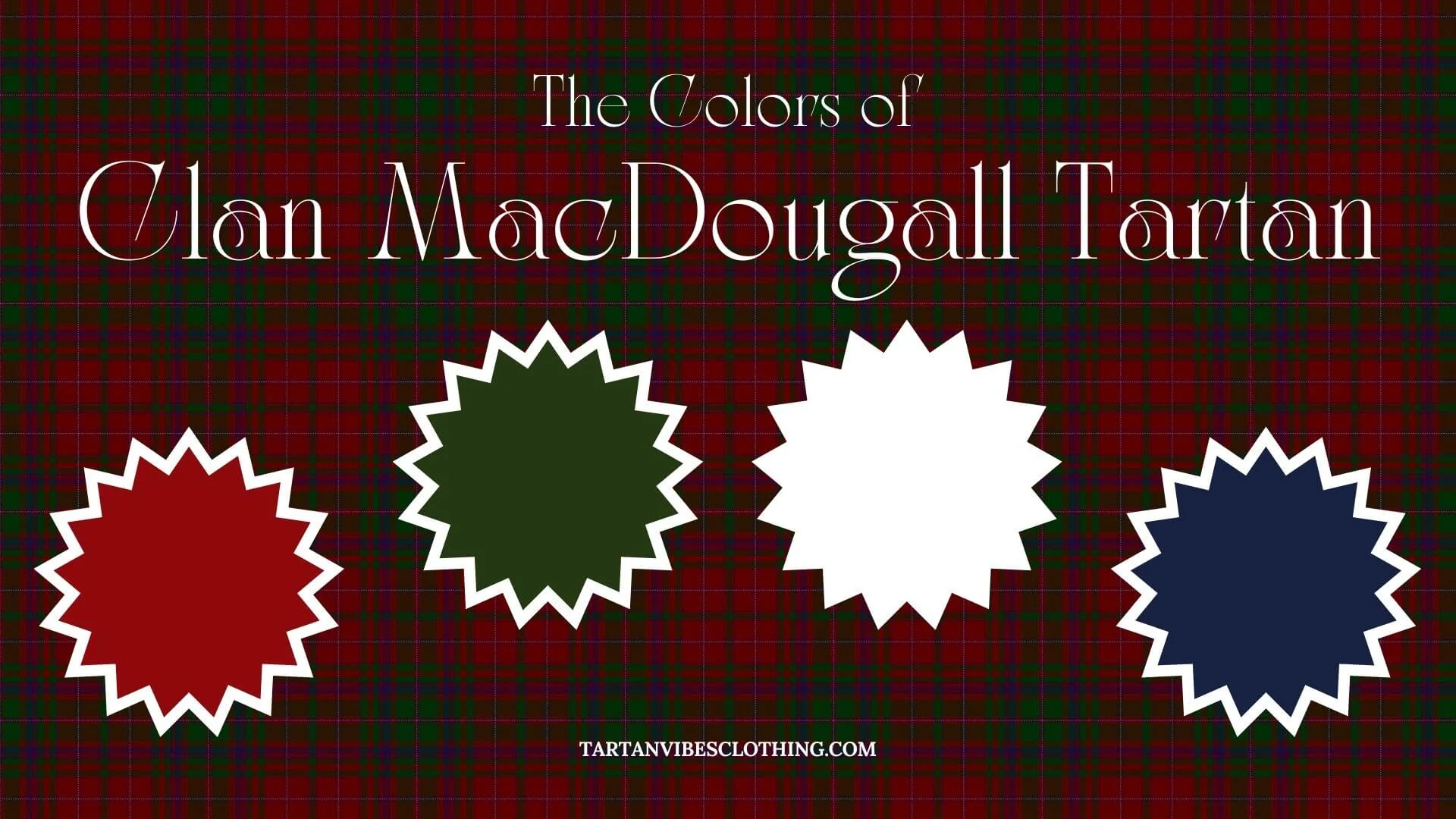
While numerous clans opted to create or adopt their tartan designs, the MacDougall clan is particularly notable for its distinctive approach. Instead of inventing an entirely new pattern, the MacDougalls benefited from having an established tartan that was significant to their lineage.
The MacDougall tartan, or the Heritage MacDougall tartan, may not be a replica of the ancient Dalriada tartan, yet it retains the same fundamental colors. The shades of green, madder red, and indigo blue found in the MacDougall tartan closely mirror those seen in the Dalriada tartan, matching even the precise hue. This relationship with the core colors strengthens the visual connection between the MacDougalls and their ancestral lineage.
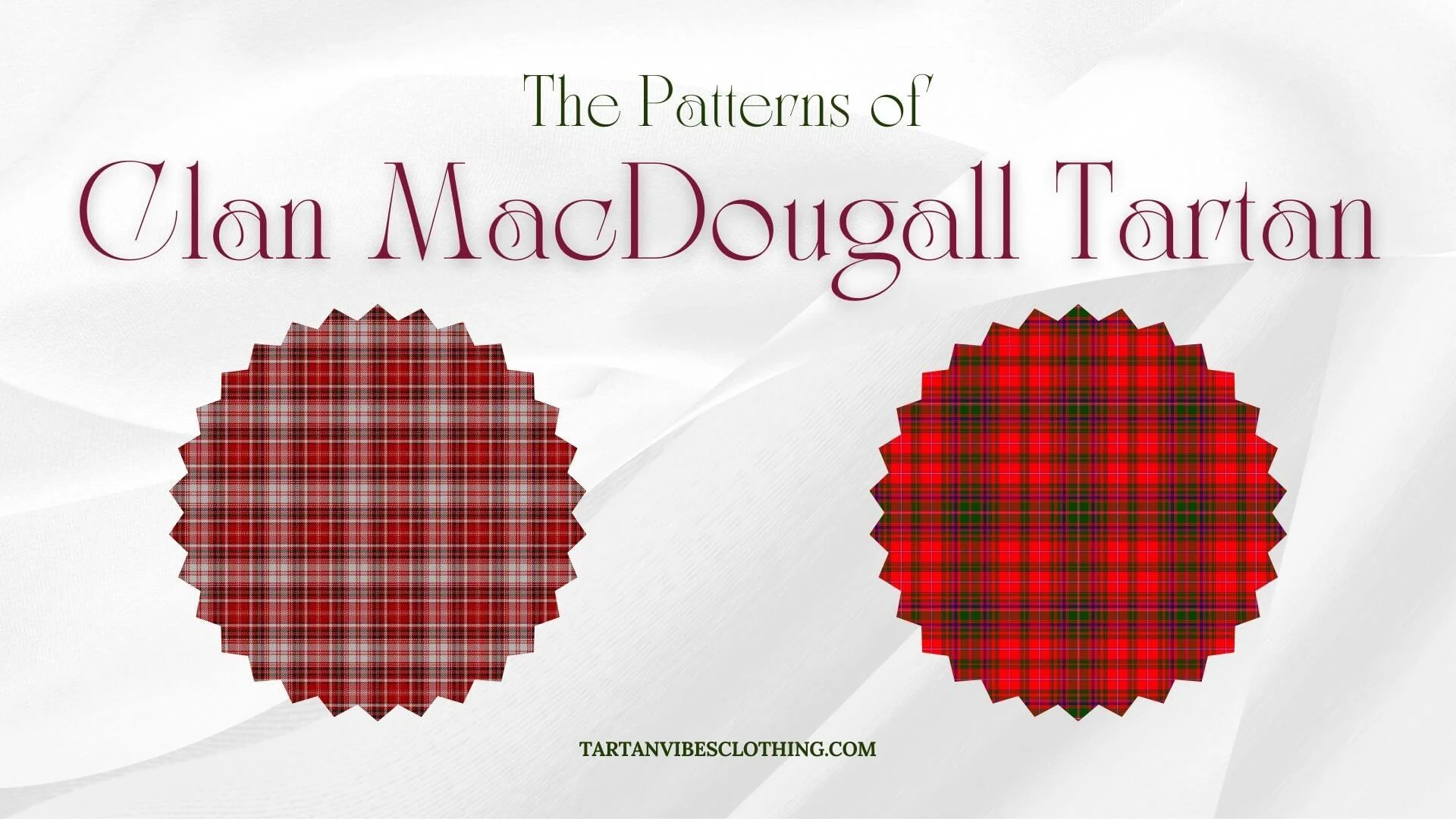
Although the core colors are consistent, the differences in the variations set the MacDougall tartan apart as a unique design. For example, the pink hue in the MacDougall tartan is merely a lighter version of the madder red. Furthermore, the white portions of the tartan are crafted from undyed wool, enhancing the design's distinctiveness.
The MacDougall tartan can rightly be viewed as a descendant or progression of the Dalriada tartan, representing the enduring link of the MacDougall clan to their historical origins. Notably, the idea of clan tartans emerged roughly 70 years after the inception of the Dalriada tartan, with weavers such as Wilsons of Bannockburn playing a crucial role in promoting and commercializing tartan production.
V. The Variations of MacDougall Tartan
A. MacDougall Modern Tartan
The MacDougall Modern Tartan is the quintessential representation of the Clan MacDougall. This eye-catching design features a rich red base, beautifully complemented by shades of green and blue, along with a sophisticated white overcheck that adds a striking contrast.
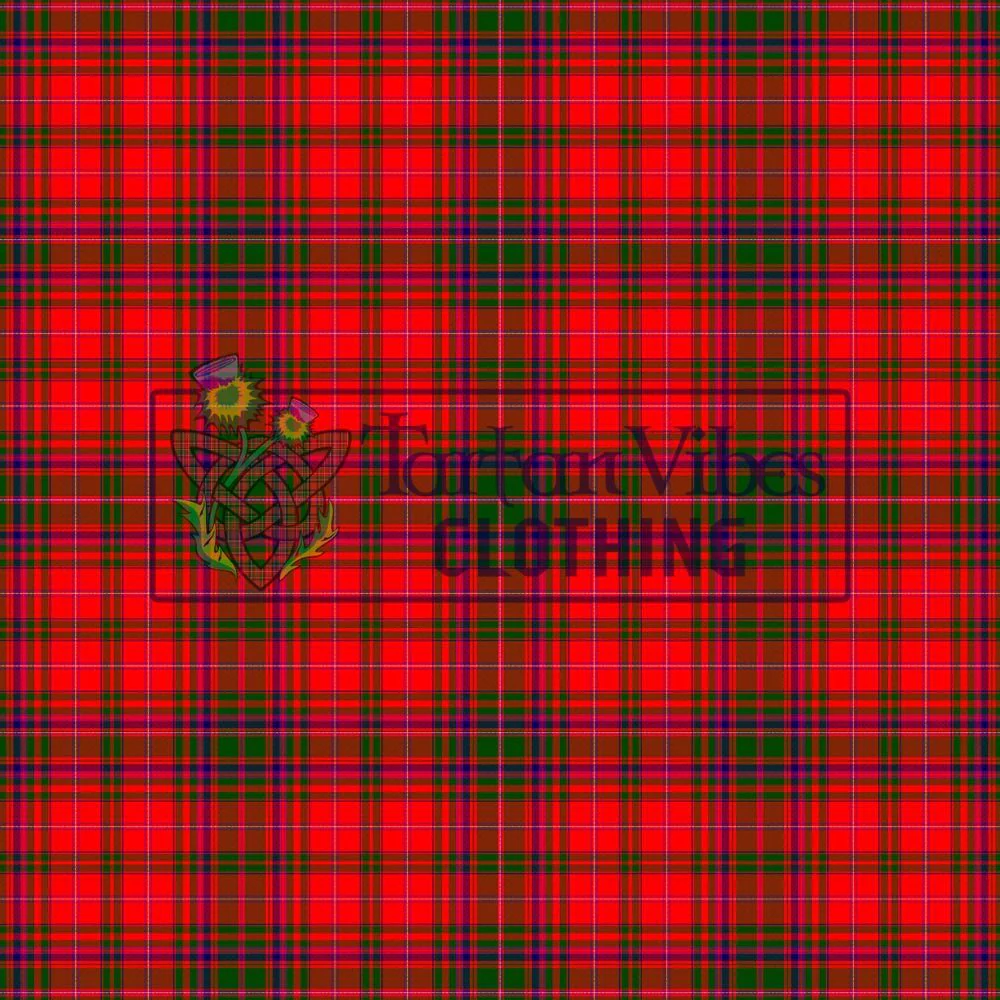
B. MacDougall Ancient Tartan
The MacDougall Ancient Tartan presents a charmingly faded version of its modern counterpart, offering a glimpse into the clan's storied past. This ancient MacDougall tartan features a warm orange base, beautifully accented by hues of green and blue, creating a harmonious palette that reflects the natural beauty of Scotland.
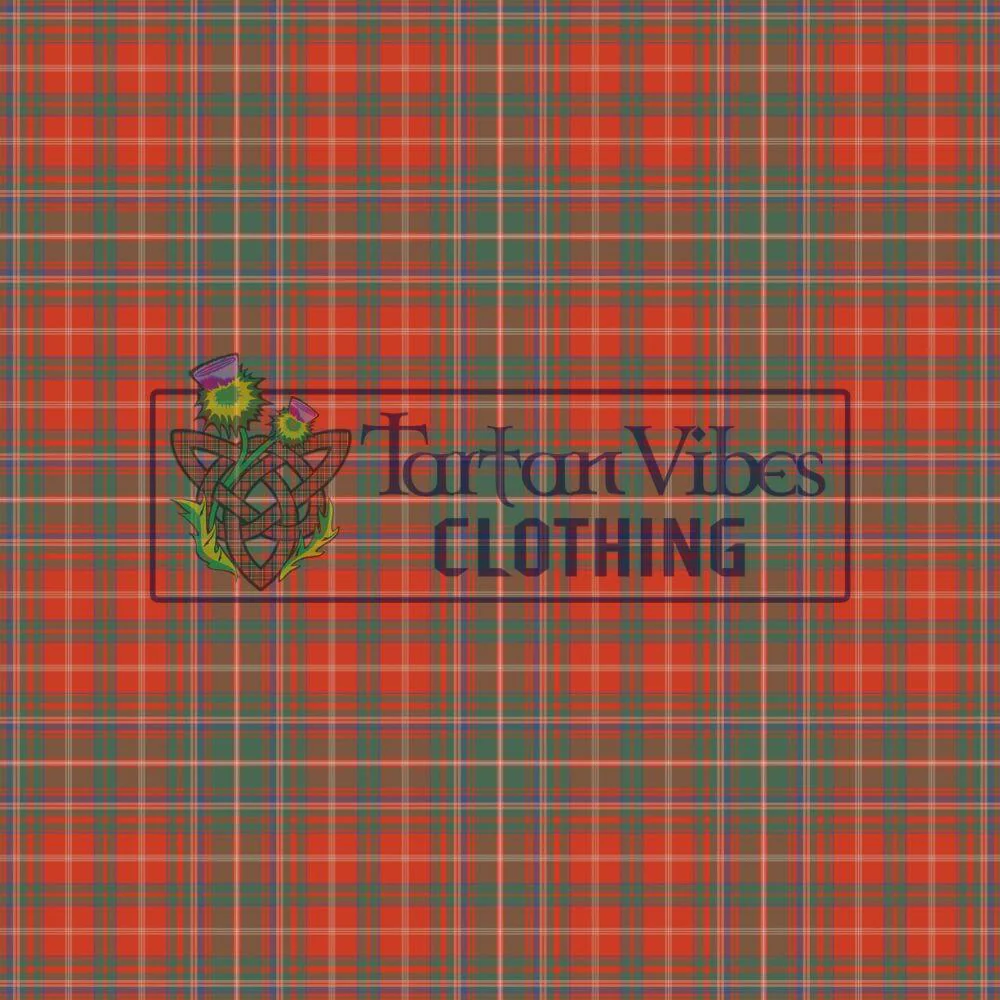
C. MacDougall Dress Tartan
The MacDougall Dress Tartan is a stunning adaptation of the original design, believed to have first emerged around 1970. This elegant tartan features a rich dark red base beautifully intertwined with lighter red tones, enhanced by delicate shades of green and white. The harmonious combination of colors not only pays homage to the MacDougall clan’s heritage but also makes it a sophisticated choice for formal occasions.
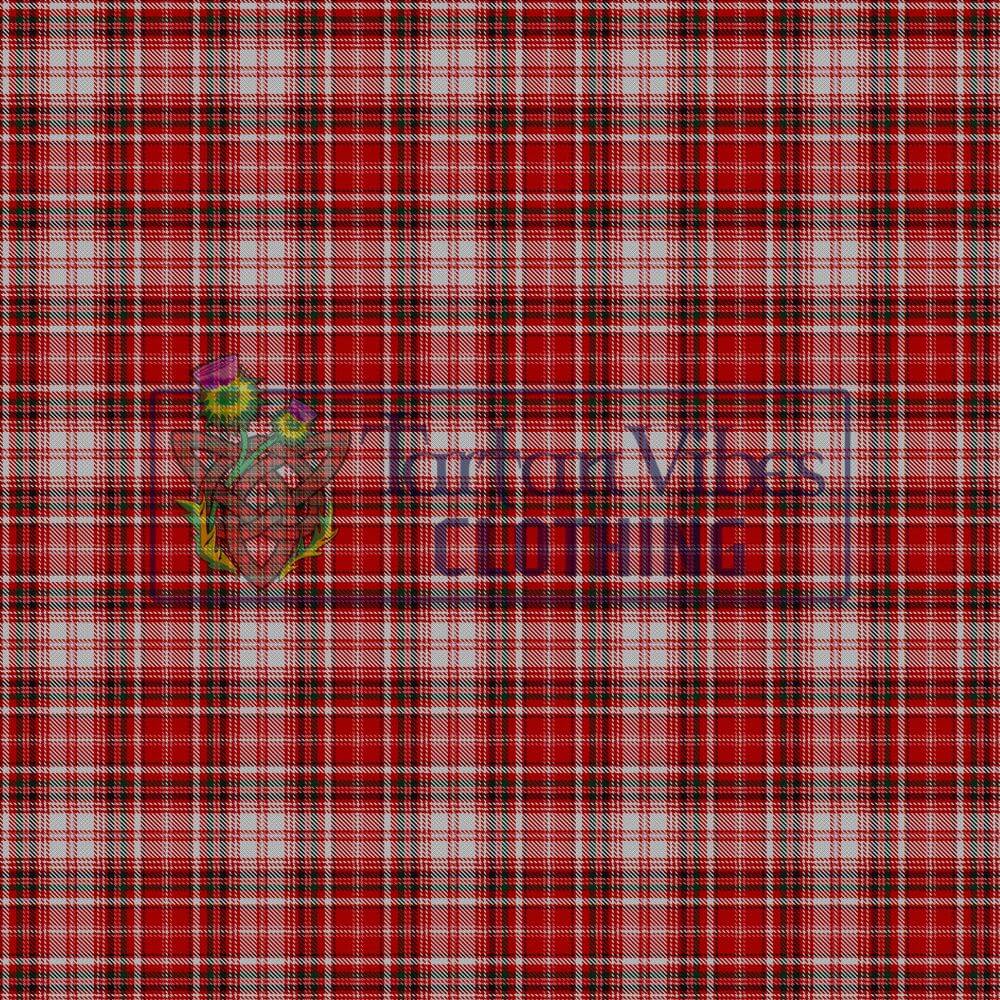
VI. Uses of MacDougall Tartan in modern day
A. Attire
The MacDougall Tartan is frequently used in traditional Scottish attire. From kilts to sashes, this tartan finds its way into various garments, allowing wearers to display their heritage proudly. In weddings, clan gatherings, or Highland games, the tartan becomes a focal point of connection to Scottish culture.
B. Home Decor and Accessories
Beyond clothing, the MacDougall Tartan has also made its mark in home decor. From tartan blankets and cushions to curtains and upholstery, this beautiful fabric adds a touch of Scottish elegance to any space. Its vibrant colors and patterns can create a cozy and historically rich atmosphere.
VII. How to Wear MacDougall Tartan?
A. Styling Tips for Traditional Wear
If you're looking to don the MacDougall Tartan in its traditional form, consider these styling tips:
Kilts and Sporrans: A kilt made from the MacDougall Tartan can be complemented with a sporran, stylishly showcasing the heritage.
Shirts and Accessories: For a polished look, pair your tartan kilt with a crisp white shirt and a waistcoat. Don't forget the accessories—ties and pocket squares in the same tartan enhance the ensemble.
B. Incorporating Tartan into Everyday Fashion
For those who wish to blend tradition with modernity, here are some suggestions:
Casual Outfits: Incorporate tartan prints into shirts, skirts, or scarves for a chic yet laid-back appearance.
Layering: Use the MacDougall Tartan in layering pieces like jackets or cardigans to add texture and depth to your outfit.
VIII. Where can I find MacDougall Tartan?
If you're looking for MacDougall Tartan, start by checking local fabric stores or specialty shops that focus on Scottish textiles. They often carry authentic tartans, including MacDougall.
Additionally, you can also look up a wide range of MacDougall Tartan merchandise from apparel to home decor and accessories via the Tartan Vibes Clothing website.
Finally, keep an eye out for Highland Games or Scottish festivals, where vendors often showcase traditional textiles, providing a unique chance to find MacDougall Tartan while enjoying the cultural festivities.
IX. Conclusion
Frequently Asked Questions
Where does the MacDougall Tartan originate from?
The MacDougall Tartan originates from the MacDougall clan, one of the prominent clans in the West Highlands of Scotland. This clan has a rich history dating back to medieval times, and the tartan symbolizes their cultural heritage.
How can I wear the MacDougall Tartan on traditional occasions?
You can wear a kilt made from MacDougall Tartan, paired with a white shirt and a waistcoat for a polished look. Additionally, coordinating accessories like ties or pocket squares in the same tartan can enhance your style.
Can MacDougall Tartan be used in products beyond clothing?
Beyond clothing, MacDougall Tartan is often used in home décor items such as throws, cushions, and curtains. It adds warmth and a touch of Scottish style to living spaces.
Why is it essential to preserve and use tartan?
Preserving and using tartan, such as the MacDougall Tartan, is crucial because it connects generations to their cultural heritage and history. This not only honors national identity but also keeps the stories and traditions of ancestors alive in contemporary society.












